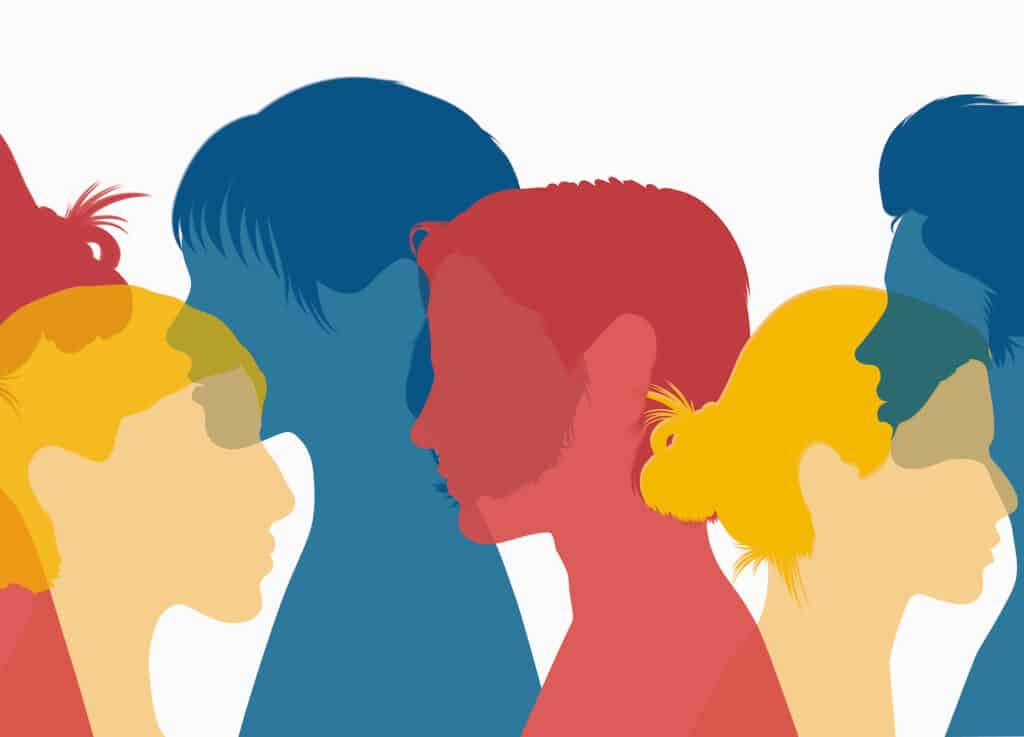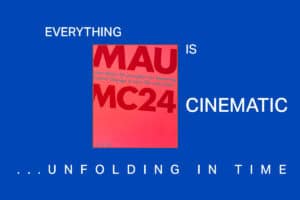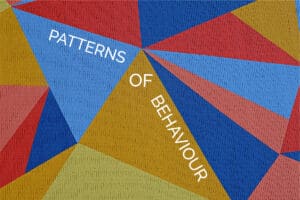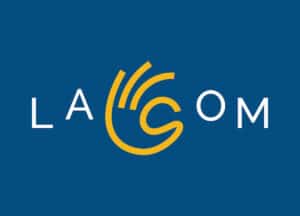The longest running study of adult life
The researchers of the ‘Harvard Study of Adult Development’, the longest running study of adult life from teenagers to death (began in 1938 with 724 men) from their experience, tell us that we are blind about ourselves and that we present ourselves in certain lights.
To combat self perception versus the truth, the study also included reading tone of voice and word choice, natural language processing using AI (which deciphers mental state based on how we speak), recency effects and peak end rule (tendency to remember peak and ending versus moment by moment), and other forms of observation, e.g. questionnaires completed by your Spouse or Dad.
(The study continues to this day with the next generations. The premise of the study is to better understand what a good life looks like… spoiler alert, it’s not money and fame. For more on this study: https://news.harvard.edu/gazette/story/2017/04/over-nearly-80-years-harvard-study-has-been-showing-how-to-live-a-healthy-and-happy-life/)
Extrapolating accurate customer information
Taking the Harvard Study research practice findings into consideration, the spoken word is not necessarily present the truth. It can also do the opposite, leading us on a wild goose chase as marketers, innovators and businesses.
We know speaking to our customers is important for business, but the lengths to which we need to drive accurate information is not always known.
We all know a real live scenario of a product pre-launch receiving favourable customer feedback, but when it hits the market, it doesn’t get traction. It could well be that the product is a dud, but let’s say it’s not, so why aren’t the sales coming in?
Every time the answer to this question will come back to the customer.
You may not agree, and think we need to go back to operations or sales, but both these aspects are the branch of the product model we created based on a specific customer.
The customer fundamentals that we need to understand?
There are three aspects of the product/service in relation to the customer that we need to investigate:
| FUNCTIONAL | What functional need does the product address? How will the customer use the product and how often? |
| EMOTIONAL | How does the product impact the customers ‘perceived status’? Luxury cars own this in spades! Did the price communicate customer value? |
| SOCIAL | Did we give the customer a good enough reason to spread the word? |
Seth Godin (Author of 18 best sellers and Marketing Hall of Fame) talks about understanding the differences between early adopters (attracted to the new) and laggards is important. We may see an initial uptake when launching, but then sales fall away because the product didn’t resonate with the laggards.
There could be an array of reasons why the product didn’t work. A big watch out is the risk of making assumptions. Thinking that we know what people’s fears, desires and needs are based on the customer personas we have created, but in actual fact, we don’t know enough information and/or have unbeknownst built in our own biases.
The value of knowing your customer
Truly understanding our customer is not a one-off event, it’s a continuous process. Building the ‘thirst’ to know our customers a lot deeper, into the fabric of our business, will improve customer satisfaction and loyalty which eventually leads to increased sales. It will also bring us closer to industry trends and business opportunities. All contributing to increased customer value and consequently increased business value.
What about B2B businesses?
When Amazon and Google came along they turned the B2B world upside down. It blew open the global market. What was once accepted as a good product/service provider, became the status quo. The bar was raised.
This massive market change has left us with no choice but to strengthen the customer experience. What will make us different in an ocean of the same? Yes a combination of digital and non-digital will improve the customer experience, we know this.
What we may not know is that the company’s culture/core is critical to strengthening the customer experience. This is also applicable for B2C companies, but the 10+ people involved in the customer experience (e.g. scoping, quoting, ordering, customisation, troubleshooting, using the product, reordering, etc) for B2B SMEs and large organisations, means that a high valued customer can be lost as a result of one disgruntled or fatigued employee.
At every stage of the process it’s vital to get a read on our customer… not just during but before they work with us, so we have a clear customer profile and understanding and therefore can pre-empt a lot of their attitudes and behaviours.
So how do we go about understanding our customer?
The options are endless. It will depend on where you are in the product life cycle, i.e. testing phase versus business maturity. You want to choose a methodology that provides accuracy and purpose. The sustainability (what’s involved and who will manage it) of continuing the research process should also be considered. (This takes us right back to the start of this article – the longest study on adult development… which wouldn’t have been otherwise).
CUSTOMER RESEARCH METHODS
(Which can be sliced and diced based on your business and industry requirements).
| New insights for growth: What it takes to understand your customer today By Jonathan Gordon, Volker Grüntges, Vicki Smith, and Yvonne Staack |
1. Observe consumers in the field 2. Digitize the daily diary 3. Use advanced analytics to get more granular 4. Better listening and learning with social media 5. Co-create with consumers on digital platforms |
| How To Understand Your Customers And Their Needs With The Right Data By Bernard Marr |
1. Transaction & point of sale 2. Demographic data 3. Attitudinal data 4. External data sets |
| For greater success get to understand your customer By Nate Gilmore |
1. Create ideal profile 2. Determine your desired outcome 3. Put work into your customer interviews |
| 3 Persona types By Page Laubheimer |
1. Proto – Quick assessment 2. Qualitative – Small scale, segments customers on shared attitudes, goals, pain points, expectations, etc. 3. Statistical – mix of quantitative and qualitative |
| Talking to Humans, Success starts with understanding your customers: Effective customer interviews By Giff Constable with Frank Rimalovski |
1. Do your interviews in person 2. Talk to one person at a time 3. Add a note taker 4. Start with a warm up & keep it human 5. Disarm your own biases 6. Get them to tell a story 7. Look for solutions and hacks 8. Listen don’t talk |
Understand first and then very slowly change
A recent brand development project Run Partners worked on if all the people involved had no other projects could have taken two weeks from start to end. Instead it took four months instead.
If we went with two weeks we would have missed out on the gift of time. The thinking, developing further on ideas, working with the customer to get their customer right, understanding their business direction, etc… and the project would have been worse off for it.
Across the four months we all went on a journey of change and learnt that real embedded change takes time. Time for both processing and for allowing the process to work its magic. And most importantly time to also allow for deep listening.
I encourage you to take the time if you want to project quality to your customers.
Get out of the building
The more we know our customer the stronger our relationship and knowledge. Find a method that allows you to go deep. ‘Talking to Humans’ by Giff Constable, talks about ‘getting out of the building’, ‘look for patterns that will help you make better decisions that lead to smart action’.
Customer insights don’t stop at product launch, they continue. In today’s world our customers also include our employees, a pivotal aspect of all our businesses in a talent shortage market.
The more you get to know your customers deeply, the more you will love providing your products/services for them specifically. You will also find yourself working even harder to ensure they achieve their desires and feel what you bring to the table is of enormous value.
Appendix
(1) 2016, Giff Constable with Frank Rimalovski,Talking to Humans,
(2) 2020, Page Laubheimer, 3 Persona types, Nielsen Norman Group
(3) 2022, Nate Gilmore, Forbes.com, For greater success get to understand your customer
(4) 2022, Bernard Marr, Forbes.com, How To Understand Your Customers And Their Needs With The Right Data,
(5) 2016, Jonathan Gordon, Volker Grüntges, Vicki Smith, and Yvonne Staack, Mckinsey.com New insights for growth: What it takes to understand your customer today
(6) 2019, Seth Godin, This is Marketing
(7) 2020-2022, Tony Bodoh and Betsy Westhafer, Podcast, Really know your customer






